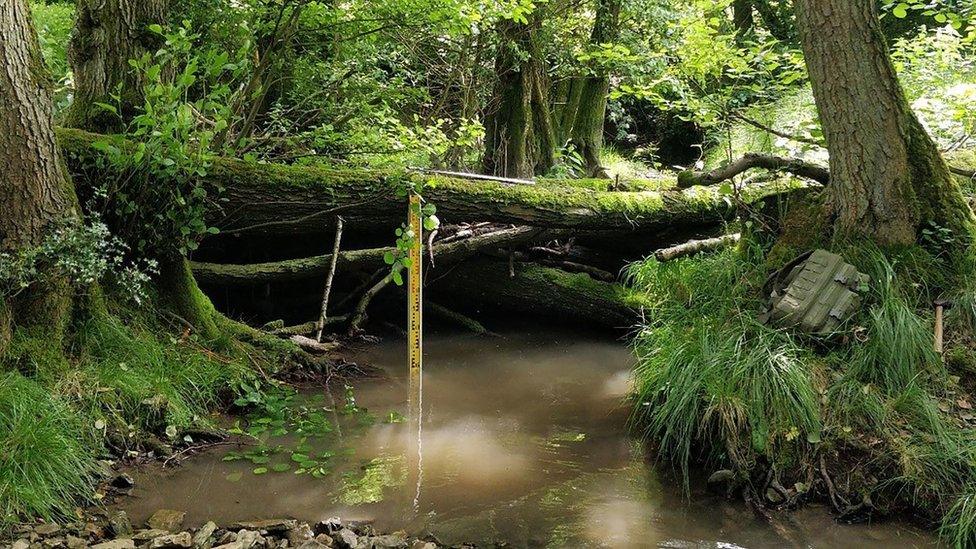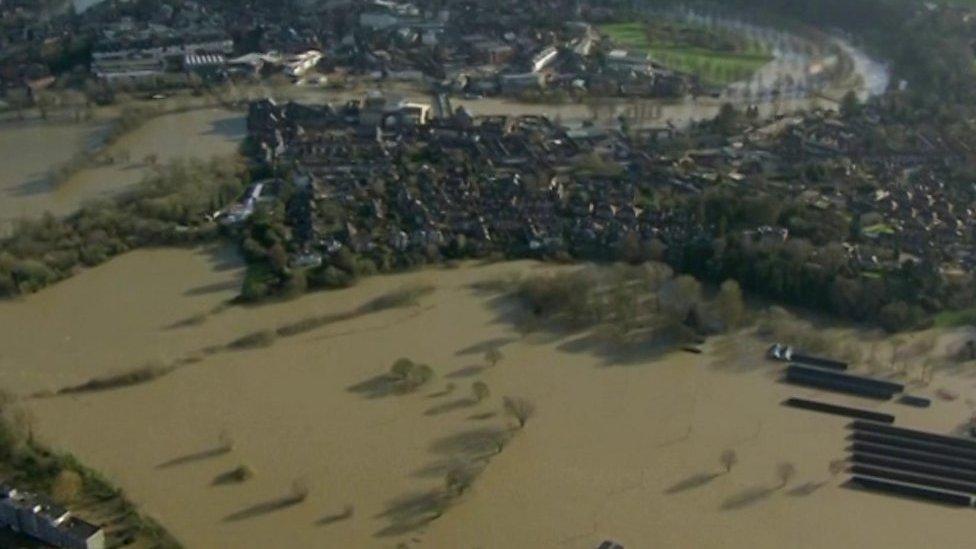Beaver-like dams can protect communities from flooding - study
- Published

The study found river barriers similar to those built by beavers can protect communities at risk of flooding by storing water upstream
River barriers similar to those built by beavers can protect communities at risk of flooding, a study has found.
Research done in Shropshire by Cardiff University and the University of Worcester found the barriers deliberately increased water levels upstream to slow down river flow.
The "leaky" dams, made from trees, branches, logs and leaves, were monitored for two-years.
This provided benefits to the river and nearby farmland, the study said., external
The dams helped by storing water upstream then slowly releasing it at the site at Wilde Brook, Corvedale, in Shropshire.
Dr Catherine Wilson, of Cardiff University's School of Engineering, said: "We show that leaky barriers are effective in slowing down the flow of the river during periods of rainfall, storing up vast quantities of water which would otherwise rush through, causing damage to communities downstream.
"Instead, this force is slowly released over a period of a week to 10 days."
Dr Wilson added the leaky barriers were not only sustainable but a "low-cost solution", costing between £50 and £500.
"Leaky barriers are most effective in narrow channels with steep banks and better at reducing flooding during smaller storm events than during larger ones.
"This tells us that they are a valuable addition to existing flood management strategies."

Beavers use their front teeth to cut branches and trees to make dams
Research continues to monitor the effectiveness of leaky barriers at the Shropshire site, one of 60 identified by the Department for Environment, Food and Rural Affairs, to evaluate natural flood management.
The scientists said findings from their study could be used by government and industry to develop flood defences for smaller, more frequent storms and to help create an approach for modelling leaky barriers during larger storms.
Prof Ian Maddock, Professor of River Science at the University of Worcester, said: "The results of the study have helped inform our work with local authorities to identify new sites for natural flood management.
"It's enabled us to target sites where the installation of leaky barriers will have the greatest impact in reducing flood risk to communities and landowners downstream."

Follow BBC West Midlands on Facebook, external, Twitter, external and Instagram, external. Send your story ideas to: newsonline.westmidlands@bbc.co.uk, external
Related topics
- Published24 February 2023

- Published5 February 2023

- Published22 February 2022

- Published13 January 2023
